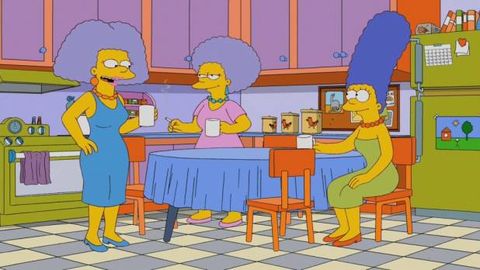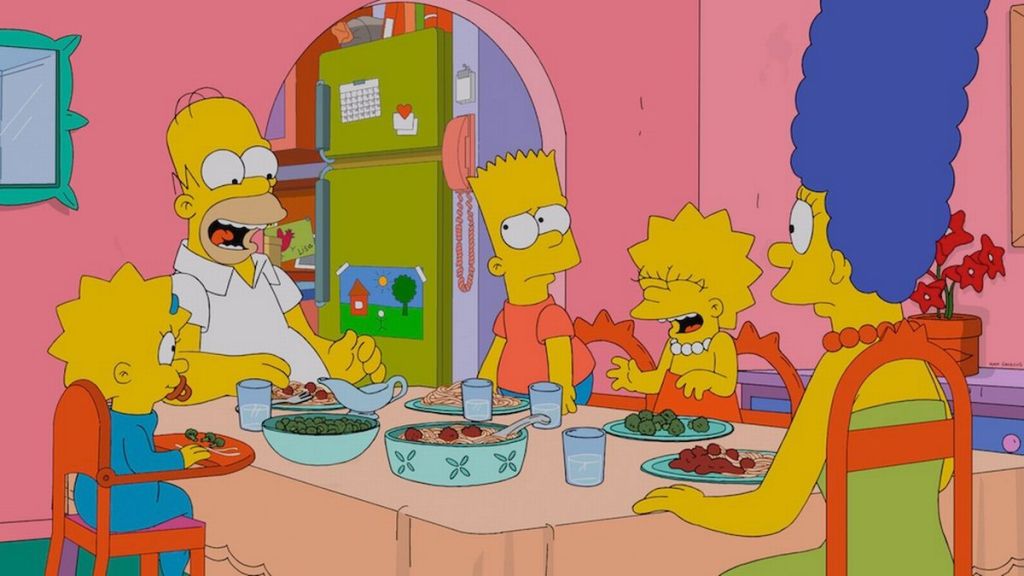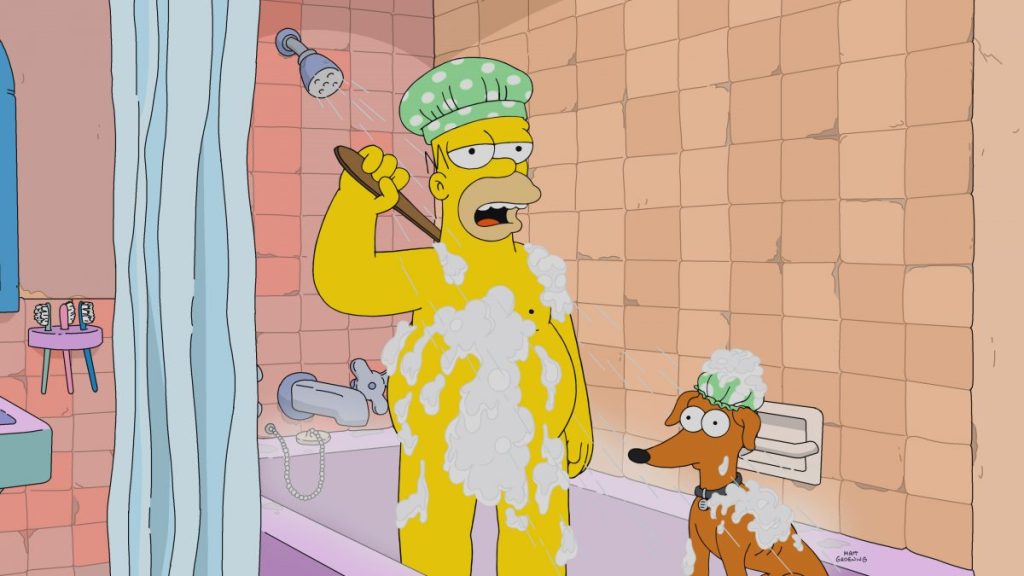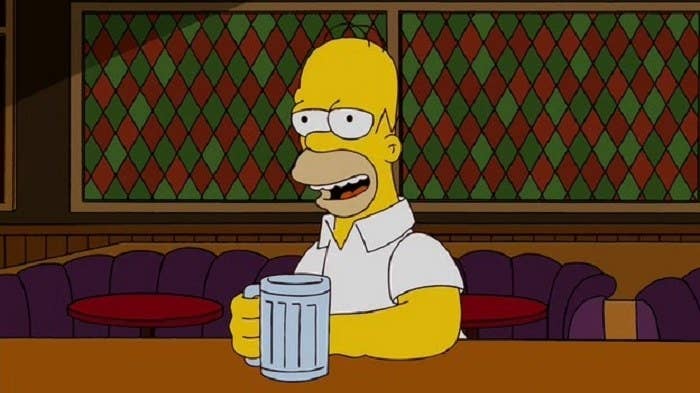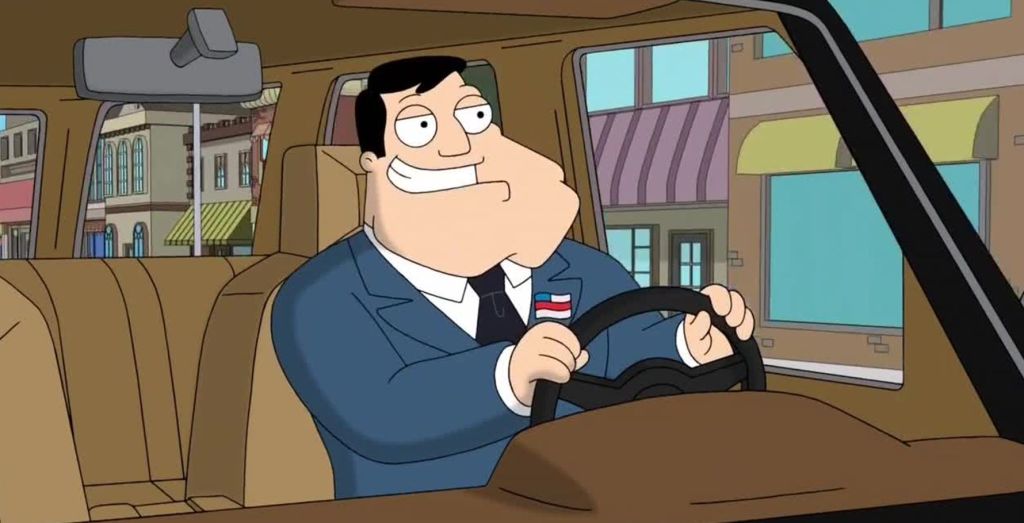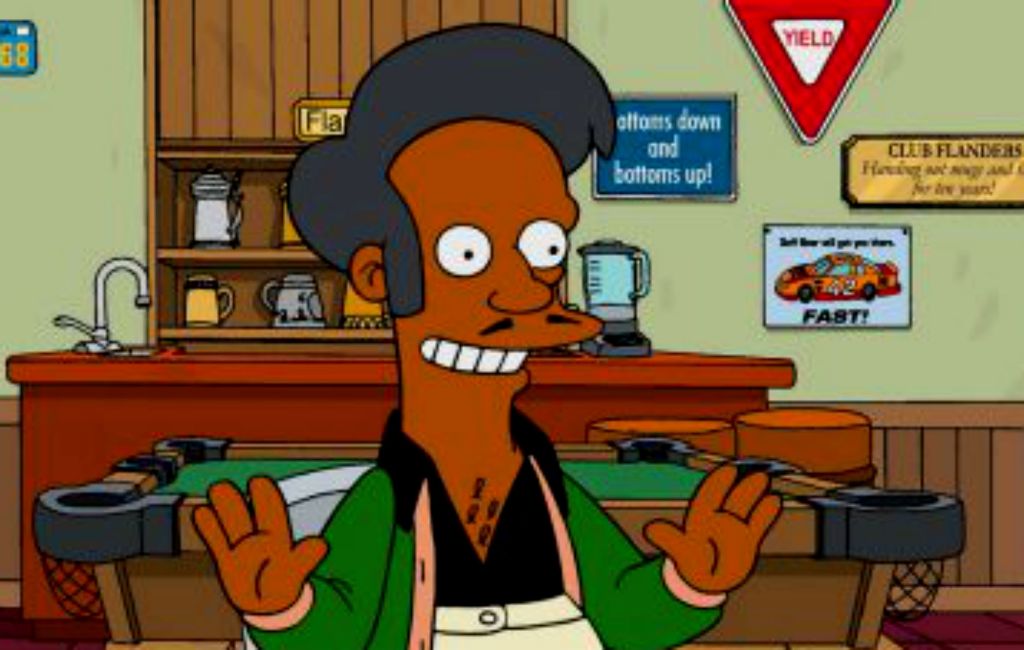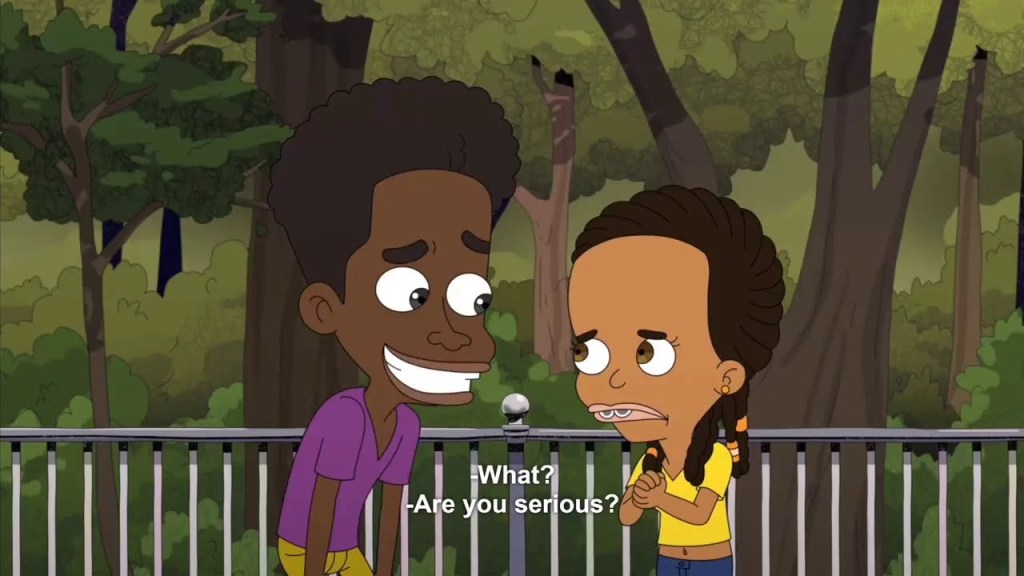There are multiple variations of things that can be represented within an animated production, most of the time the elements of representation are written into the story through scripts and expressed through character designs and biographies.
Representation of things such as gender, ethnicity, religion, age and sexuality are shown in many ways throughout numerous animated productions. This research should help me with the storytelling side of this assignment, and will help me to explore different ways to represent each character in a way that communicates clearly their place within the story that I am telling.
I think a great place to start looking at representation would be the popular animated series ‘The Simpsons’. The Simpsons has been going on for so many years and personally was a consistent part of my childhood. There are many other shows I could include as examples. I will develop on each segment starting with a known classic and hopefully develop on this, referencing a range of examples focusing on representational characteristics.
The way for me to best communicate my understanding on representation would be through showing characters that I know from animations that I know. This is because I will understand the representation presented in each case better than if I were to choose a range of animations. I think this will be beneficial for me in a way because I am more likely to develop concepts and ideas that interest me, so looking at representation within existing productions that I enjoy will be a great way to explore this factor before applying it to my own work.
There is a ‘normal’ that has been communicated through writing for years that helps to show exactly what a characters place is within a story with little explanation. A lot of the time these are considered stereotypes, but if used in the right way they are constantly giving information to the audience so that we understand what is going on and who people within the story are, without anything being said about them.
Representation Bibliography –
Representation in cartoons, Representation in animation, Importance of representation,
Gender
Female Representation –
In The Simpsons, Marge is a mother, she doesn’t work, she goes to church and she looks after her husband and children. This would be considered as a stereotypical representation of a Western Christian woman. This kind of stereotype is very typical in animated series and really, any kind of production. This is because it shows an oversimplified image or idea of a person or thing. Essentially it makes it very clear and obvious of a persons role within the story using straight forward and ‘typical’ base for the character.
In contrast to this, by the same creators you have got Leela. Now Leela, I would consider the polar opposite of Marge, she works, she is strong and independent and is the captain of a spaceship. In Leela’s world of futurama she fits perfectly, if you were to replace Leela with Marge, the character would seem out of place in the world of futurama. Representation is key for continuity in a ‘world’ that you create for a concept.
In this case and in many others there is some sort of stereotyping involved in character design, for example, Leela is a stereotypically ‘sexy’ character, complying with the male gaze. However, contrasting to this she is one of the only smart characters of the group of main characters. She is very rational and always has involvement in saving the day. She is a strong woman that looks different but fits into stereotypes that make it clear just from looking at her that she is a love interest for more than one character.
Another contrasting female representation in animation would be the character Bean from another Matt Greoning production, Disenchantment.
Bean is presented as a tomboy, as the episodes progress you see that she doesn’t care about her appearance r what people think of her. Most of the time she is drunk, she belches and makes a fool of herself regularly, not many people take her seriously and although she is a princess in the programme, she is everything but a princess through the character development and the script writing. Bean ignores responsibilities and is very independent, she pretty much does whatever she wants and always saves the day. A perfect anti-hero, breaking stereotypes but acting emotionally for nobody but herself.
I thought it would be interesting and beneficial to look at the difference between brother and sister representation before moving onto male representation. In family guy you have the differences apparent between Meg and Chris that I believe would fall into representation of genders.
Meg was originally depicted as the “sweet, teenage daughter” who typically took the blame for bad things done by the other members of her family. However, over the years, the writers stripped Meg down to a desperate teenager who is hardly noticed by her family. She is nerdy, bullied by everyone, family included. She has a tomboyish appearance, seems as if she doesn’t care but it is clear that she cares a lot and dresses the way she does due to her being self-conscious as a result of the bullying.
Chris, like his dad, is obese, has a low IQ, and little to no common sense. He doesn’t do well at school, is quite childish and immature. Despite this his family takes pity but contrastingly, see him as the golden child in comparison to Meg. Almost like he can do no wrong.
There are obvious differences between the male and female, brother and sister representation. Instantly you have the colour scheme used for their clothing. Meg wears pink, she is a girl. Chris wears blue, he is a boy. Very stereotypical male/female colours and although a small feature does add to the representation of their gender.
Another important thing to note here would be that you don’t necessarily need to know the programme or the family to watch an episode and easily make the connection that Meg and Chris are brother and sister; this expresses very good, clear and understandable representation of not just gender but character relationships.
Male representation –
Stereotypes and easily recognisable representation is commonly used in character development simply because it makes the story, the world and the program or film itself understandable. It is a basic trademark that most production have included. Not just for females but males too, usually the man works, he is work driven or he is lazy and hates his job. Most of the time he supports the family or if he doesn’t have a family then he is sexually driven, a player, attractive and most of the time does what he wants, acting rationally for his own pleasures and that alone.
Homer, father figure from The Simpsons is a character that I would consider is represented as stereotypical, lazy American man. He is overweight, he hates his work, he is lazy and will avoid responsibilities at any possible chance. He has a low IQ, but in some cases he can be kind, sweet, thoughtful and this makes him a loveable character. His stupidity almost makes him pitiful, you feel bad for him and when I look at him I think “aww” as many others would. This character development paints a clear picture of his gender, his responsibilities and his place within the story as well as the world of The Simpsons.
Contrasting to this you have the character Stan, the main character of the animated show American Dad. Stan is work orientated, he appears as if he doesn’t care about is children, so long as they are not embarrassing him. He is strong and attractive which is communicated through shape language, he is very angular, triangles and squares make up his silhouette which makes him less loveable and appear more strong willed. He is hard working, devoted to his job and his country (stereotypical proud American man) but he is rude and unlovable, he treats his wife horribly and as I mentioned before he doesn’t really have any interest in his children.
Finally you have the characters like Quagmire from Family Guy, who are usually secondary characters mainly because there isn’t much more to the characters other than the fact that they think they are the best. Quagmire is a piolet, he uses his job to get what he wants from women, he is always talking about or referencing sex. Other than this there isn’t much more to him as a character.
I know that there are several other examples of these three stereotypical representations of men as well as other categories that are not stereotypical altogether, However, I do feel that this process is repeated through multiple varying animations. This is because it is easy to decipher who they are, what they do, what they are like and their place within the story happening on screen.
Gender representation is imperative for a production that is understood by a wide audience. Most of the time this is the same for other elements of representation too. If there were more specific characters, it could be more difficult to interoperate for a viewer. Most of the time with characters in programs such as those noted above, you can flick any episode on and just know who people are and their place within the animation. This kind of versatility is important if you want your program to reach a wide audience and have it continue for years to come.
Gender Bibliography –
Inside Out, Gender representation in cartoons, analysis of gender representation, queer, trans, non-binary, gender in media
Ethnicity
The representation of ethnic characters within animation is complex. A lot of the time stereotypes are used and as I have spoken about, although this makes the characters ‘easily understood’ this also means that ethnic minorities can feel inaccurately represented and in some cases attacked, especially when these stereotypes are exploring inaccurate, rude and in some cases racist remarks against people of ethnic backgrounds different from the backgrounds of the main characters.
You also have the representation of different ethnic countries as a whole rather than through characters, this can be seen through holiday episodes or episodes with characters of ethnic backgrounds and their home or work environments. Most of the time these elements are accurate depictions of what would be seen if you were in the country, or things that stereotypically relate to the place in question.
There are endless ethnicities that are seen represented in a range of productions. I would like to briefly look at the representation of African American and Indian ethnicities through characters in this section to show my understanding the main reason for this is because I think that this will help more in terms of character creation and development. In terms of developing accurate locations – I feel this requires more attention and could be explored extensively in a whole separate post.
Apu is a well known character from ‘The Simpsons’ he is very stereotypically ‘Indian’ in terms of his faith, accent, work, children etc. He is proud to be in America, which is a stereotype that all foreign people that go to America love it there because ‘America is the best’ in the eyes of an American. This may be true for some individuals but not for all.
The character is an Indian immigrant, he is a hard worker and tries his best to balance work and family life. He has a few jobs; owner of the Kwick-E-Mart and Computer scientist. He is also in medical school. All of these roles he has within the animation are stereotypical jobs for an Indian immigrant.
The final stereotype that I would like to include here is his accent, the Indian accent in general has been particularised, stereotyped and exaggerated by comedians and the media for a long time and The Simpsons are no acceptation here, they do the same with most ethnicities, exaggerating them as much as they can to try and imitate what they think is a correct representation of the ethnicity.
Lana is a character from the adult cartoon ‘Archer’ she is presented as strong, unapologetic and independent, and although it’s insinuated that she is of mixed race, Lana identifies herself as black, as shown in a dialogue with her ex-boyfriend in the animated series. There are many jokes and stereotypes intertwined with Lana as a character, for example there are several ongoing jokes about her having large hands. This is a stereotype that is repeated throughout the series. Although there are stereotypes present with this example, just as there are with any other character within most animated series, on the other side of this she is a strong character that is always true to herself so I think that for the most part she is a positive representation of her ethnicity.
Contrasting to this there are characters such as DeVon, a character in the show ‘Big Mouth’ who wears trendy clothes, is popular and has a popular girlfriend. It is also suggested that he has been held back for a while, making him older and more mature than his classmates. He is from a bad neighbourhood and he doesn’t really care about his education. This to me is a very stereotypical black representation for a teen/late teen character. There are many other elements within the production that point to his African American ethnicity in a stereotypical light, making DeVon a more controversial character.
Sometimes there are a lot of problems around characters of colour and their voice actors. It is not liked or agreed with by most if a character of a different ethnic background is played by a voice actor with a background opposing the character.
For example, the voice actor Hank Azaria played many roles over the years in The Simpsons. He was Carl Carlton, Bumblebee Man, Apu, Dr. Nick, among other characters, all that I have named have different ethnic backgrounds; Carl is African American, Bumblebee Man is Mexican, Apu is from India, Dr. Nick is of Hispanic descent and has an Argentinian accent.
All of these different characters with different accents and different backgrounds are all played by one man from New York, and understandably the minorities that are represented here are upset by this. They want to have true and realistic representation by people who understand their cultures and their backgrounds.
Ethnicity Bibliography –
Racial diversity in children’s cartoons, Race and ethnicity in animation, cultural representation, race and representation Religion, comedy and animation, religion and spirituality
Age
The representation of age groups is also a common element that is worked into most productions. Especially those with an extensive amount of characters. I didn’t really want to go into specifics with the representation of age and show examples because I feel as if this section can be easily deducted without the need for showing examples. Obviously there are always characters that contradict the ‘rule’ but the majority of the time age groups are represented as the following:
Older people, grandparents or anyone over the age of 70 are usually represented with elusive trains of thought, they ramble, have a story for almost every situation, take a lot of medication and are extremely forgetful. If they are not represented this way then they are usually the opposite; wise, knowledgeable, intriguing and independent.
Middle aged people are focused on family or work, they are usually stressed sometimes they are mid-crisis; all of these moments, moods and representations are dependant on the story, this is because the focus of not all but most animations is usually a middle aged person, the family of a middle aged person OR someone who is becoming an adult.
There are two extremes of any representation. For teens and children they usually fit into the good or bad categories. Good meaning, excited about education, does well in school, has a lot of passions and has a direction in life. Bad meaning, the bully, the clown always joking or pushing people around and has no real intention for a future.
Sexuality
There are many different sexualities that I could look into for this segment. The LGBTQ+ community is so extensive, I feel it would be virtually impossible to look at every single sexuality in our day. For the sake of simplicity I thought it would be good to look into the obvious, well known and more commonly accepted, understood and represented: Gay, Lesbian and Straight.
Greg Corbin and Terry Bates in American dad are represented as stereotypical gay characters, they are stereotypically attractive men, muscular, pretty with a smoulder. However, they show femininity through their movements and their interests/activities. The gossip and drink wine together, they work together, they partake in stereotypically ‘gay’ or ‘feminine’ things. every choice that is made adds up to the way they are represented.
They even include hostility from other ‘macho’ male American characters that are against two men being together. It is known that some people (despite it being 2022) are still very set in stone, and do not agree with gay people, gay rights, gay marriage etc. All of these little elements tell you more and more about a character and their place within the story.
Patty Bouvier is represented as a stereotypical lesbian, after years of conspiracies explored by viewers of The Simpsons, it was confirmed that Patty was indeed a lesbian. She
Comparing they gay and lesbian representation above to straight representation is complex. However, I do think that the straight characters who are in relationships always appear unsatisfied or have more problems, where as those presented as gay/lesbian and are in relationships, most of the time with few exceptions, they are very happy and their relationship is seemingly perfect. Almost like they are best friends in love.
When a straight character is single, they are represented as either independent, free and extremely happy or the opposite, very sad, lonely and always wanting more from life. With most elements of representation there are two extremes and depending on the characters place in the story for the episode, they will fit into either one of the extremes. I think this is important to keep in mind with any form of representation, that the more extreme, the clearer the understanding on the character.
Most over the time a character is overwhelmingly straight, using the male gaze to represent their sexuality, the only times that this technique isn’t used is when the creators want to develop a character that has a fluid sexuality, or represents a different sexuality, most of the time never saying if they are gay, straight or any other sexuality.
I have included some elements that would fit here in my previous section on female representation under gender. The way that some characters are designed can express their sexuality. If a character has large boobs and bum then they are more likely to be a character than is the centre of attention or has a lot of male love interests most of the time, this tells us that they are ‘straight’. LGBTQ+ characters, usually are the opposite of this, they don’t show of their sexuality and it is usually unspoken, they don’t always say that they are, but it is indicated and it is taken by the audience and turned into a conspiracy.
To conclude …
There are many variations of representation, each of which contributes to the final viewing, understanding and development of a character within a setting or story. Weather stereotypical or untraditional representation, representation is always present. Usually a characters gender, age, sexuality, race, religion, age; is based on the writers understanding of those things.
If they want to write about a religion, they will look into the religion and use the information gathered in order to develop an easily understandable version of it that can be translated into a production. A lot of the time this can come across as insensitive, disrespectful or rude but at the same time without the simplicity, it wouldn’t fit into the story and without it in the story, the narrative may not make sense or be too complex for the audience to understand, especially if the production is on at prime time or is appropriate for a large range audience. This goes for all of these elements.
Making representation appear clearly and simply is a huge component in developing a production that can be understood by a wide range of people.



